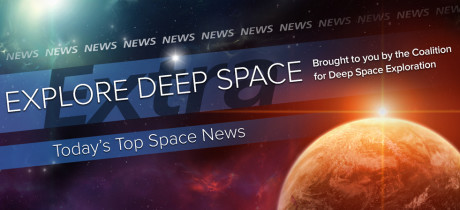In Today’s Deep Space Extra… Though slowed by a record partial U.S. government shutdown, NASA workers are moving ahead with efforts to support Commercial Crew Program test flights this year and prepare the Space Launch System (SLS) for its inaugural test flight.
Human Space Exploration
Unpaid NASA workers protect critical missions during government shutdown
Coalition Member in the News – Boeing
CBS News (1/17): Despite an absence of pay during a prolonged partial U.S. government shutdown, NASA employees continue to advance the agency’s critical missions. Those include preparations for uncrewed and crewed test flights by NASA’s Commercial Crew Program partners Boeing and SpaceX of the CST-100 Starliner and Crew Dragon. In all, four test launches of the spacecraft are planned to the International Space Station (ISS) this year, with SpaceX launching first and possibly next month. The effort is intended to restore capabilities to transport astronauts to and from the International Space Station (ISS) from U.S. soil for the first time since NASA’s shuttle fleet was retired in 2011. NASA workers are also looking after Space Station crews, the Hubble space telescope and other space observatories. It’s unclear, however, whether the uncompensated work can continue if the record shutdown, which began December 22, continues into February.
NASA keeps SLS moving despite shutdown
Alabama.com (1/16): At NASA’s Marshall Spaceflight Center, work continues in spite of a record partial government shutdown to develop the Space Launch System (SLS) rocket that is to start human explorers on future missions of deep space exploration. This week, a test version of the SLS core stage hydrogen propellant tank was mounted on a test stand to undergo simulated launch conditions.
Space Science
Hayabusa2 team sets date for sample collection, considers two touchdown sites
Planetary Society (1/16): The Japan Aerospace Exploration Agency has set the week of February 18 for the Hayabusa 2 mission’s sample collection from the surface of the asteroid Ryugu. The spacecraft arrived at Ryugu in mid-2018 for surveillance and initial surface encounters by deploying small hopper/landers in the Fall of 2018.
Saturn’s rings may be younger than the dinosaurs
Space.com (1/17): A new study suggests the rings of Saturn may be younger than assumed, possibly forming more recently than the extinction of the dinosaurs on Earth, some 65 million years ago.
Asteroids are smacking Earth twice as often as before
Associated Press (1/17): The pace of asteroid impacts with the Earth is increasing, actually twice as often as 790 million years ago, according to findings published in the journal Science. Even with the acceleration, the average pace of major impacts is one every few million years.
Other News
White House resubmits NOAA, Ex-Im Bank nominations
SpaceNews.com (1/17): The White House has re-nominated Barry Myers, the former CEO of AccuWeather, to head NOAA. The previous Congressional session expired before the Senate nomination process for Myers was completed last year.
European Space Agency (ESA) leaders expect a challenging year ahead
SpaceNews.com (1/17): The year of 2019 could be challenging for Europe in space. Brexit looms. Europe hopes to move on from the Ariane 5 to the new Ariane 6 launch vehicle for one. Some of the possible angst may not be addressed until European Space Agency (ESA) ministers gather in Seville, Spain in late November.
Japan launches meteor-spawning minisatellite, 6 other spacecraft to orbit
Space.com (1/17): The Japan Aerospace Exploration Agency launched the first payloads for its Innovative Satellite Technology Demonstration Program late Thursday, U.S. time. Among the seven satellites on board is one developed to create an artificial meteor shower; however, the low altitude display is not planned for another year.
Space company plans satellite launch from Alaska Spaceport
U.S. News (1/17): Arizona based Vector Launch, Inc., is primed for small sat launches from Alaska’s spaceport later this year.

